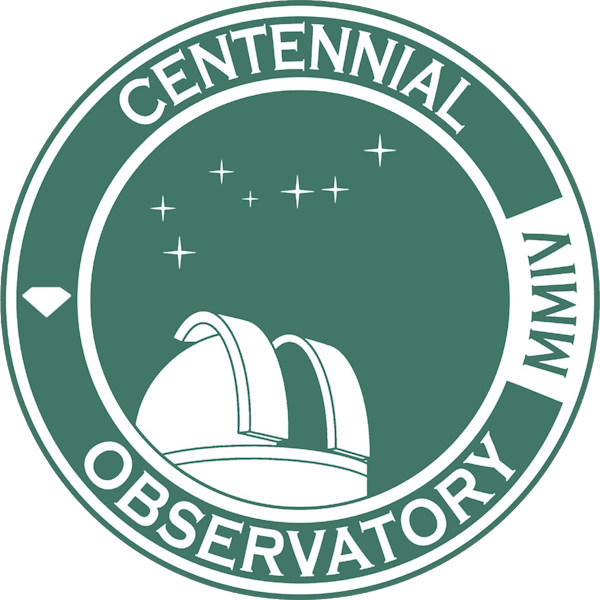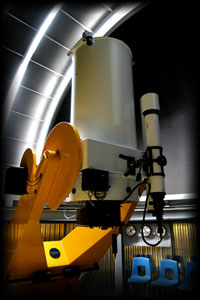Star Party Q & A
What is a star party?
A star party is an opportunity to view celestial targets in the nighttime sky through a telescope(s). The Centennial Observatory’s primary instrument is the 24" (0.6 m) Norman Herrett Telescope, a computer-controlled, fully wheelchair accessible instrument.
What time should I be there?
Although star parties typically start about an hour after sunset, visitors are welcome to come and go at any time before the session ends (two hours after opening, or until 9 p.m., whichever is later). For exact start times, call the museum at (208) 732-6655, our recorded “Star Line” at (208) 732-MOON, or check the observatory’s web page at herrett.csi.edu/observatory.
Are star parties weather dependent?
Yes, because the telescope cannot view through clouds (with the exception of brighter targets and thin clouds). If any form of precipitation is likely, the dome must remain closed to protect the telescope. To check on weather, call the Herrett Center front desk at (208) 732-6655, or consult the weather forecast links on our astronomy web page herrett.csi.edu/astronomy/.
Is the observatory heated or cooled?
For the best viewing, the observatory’s temperature is maintained as close as possible to outside temperatures. During cold weather months, visitors are encouraged to dress for comfort at 5° or 10° F below ambient temperature (since telescope viewing is a sedentary activity).
Is there a charge?
Most viewing opportunities in the observatory are free of charge, the most common exception being our bimonthly “Telescope Tuesday” star parties, held November through February.
What can I expect to see through the telescope?
At most star parties, a variety of targets are viewed. On nights with a bright moon, the selection will be limited to brighter targets like the moon, planets, and double stars. On moonless nights, deep-sky objects like star clusters, nebulae, and galaxies may be viewed as well. From time to time star parties are offered to view one-time events (e.g. eclipses, planetary conjunctions, comets, etc.). These star parties are typically shorter, with viewing limited to the featured target.
Is light pollution a problem for telescope viewing?
From the observatory’s location inside Twin Falls city limits, fainter targets (e.g. galaxies) are more difficult to see due to artificial sky glow. For those wishing to view through darker skies, the Centennial Observatory and the Magic Valley Astronomical Society offer off-site, dark-sky star parties during the summer months. The observatory at Bruneau Dunes State Park (south of Mountain Home) offers dark sky viewing on weekends during the warmer months as well.
Will there be planetarium shows?
The Faulkner Planetarium (domed theater) operates independently of the observatory, rain or shine. Planetarium shows are frequently offered on nights when star parties are held. For more info on shows and show times, visit herrett.csi.edu/planetarium.

 The main instrument is the Norman Herrett Telescope, a 24" (0.6 m) Ritchey-Chrétien reflector on a computer-controlled fork mount, manufactured by
The main instrument is the Norman Herrett Telescope, a 24" (0.6 m) Ritchey-Chrétien reflector on a computer-controlled fork mount, manufactured by